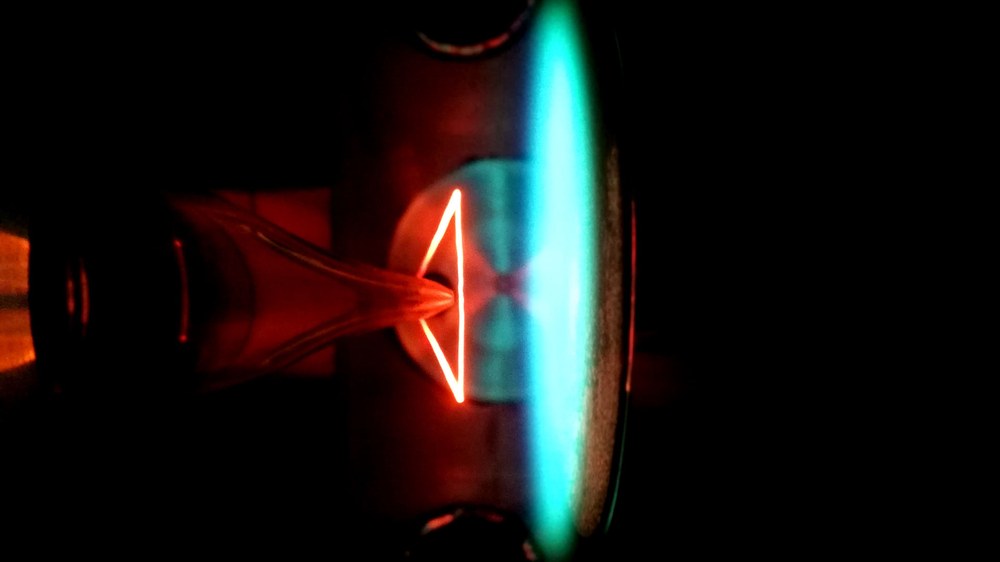PEPICO
For using PEPICO spectroscopy in flame diagnostics, a specially designed combustion chamber for model flames with a molecular-beam sampling probe was set into operation at the VUV beamline of the SLS. The established molecular-beam mass spectrometry (MBMS) in combination with the analytical capabilities of the PEPICO spectroscopy and the high energy resolution of tunable vacuum ultraviolet (VUV) radiation, which can only be provided by specific particle accelerators, allows a comprehensive, isomer-selective analysis of stable and reactive combustion species.
Cations and electrons, which are generated during the ionization process, can only be measured in coincidence by means of PEPICO spectroscopy. In addition to the established detection strategy by photoionization efficiency (PIE) curves, an additional, previously unmatched, analytical dimension is achieved. Electrons are velocity map imaged onto a position sensitive detector. By considering only electrons having no kinetic energy, i.e., threshold electrons, information about the internal energy of the cation is obtained. The resulting threshold photoelectron (TPE) spectra are spectroscopic fingerprints of each molecule and a clear identification of combustion species is feasible as exemplary demonstrated for the C9H8 isomers.
The PEPICO experiment is a significant addition to the core activities of the Institute of Combustion Technology, i.e., fuels and pollutants, and combines scientific fundamental research with wider generic societal issues. For example, hydrogen abstraction reactions and soot precursor chemistry are investigated within the DFG project "PEPICO in combustion chemistry research II". To investigate the pressure effect on the reactivity of the fuel mixtures, the PEPICO experiment was successfully extended for the use with atmospheric flow and jet-stirred reactors and even with a high-pressure (6 bar) reactor.
Projects | Pepico I und Pepico II |
|---|---|
Participants |
|
Duration | 2015 bis 2024 |
Förderung | DFG |
Selected publications:
P. Oßwald, P. Hemberger, T. Bierkandt, E. Akyildiz, M. Köhler, A. Bodi, T. Gerber, T. Kasper, In situ flame chemistry tracing by imaging photoelectron photoion coincidence spectroscopy, Rev. Sci. Instrum. 85 (2014) 025101. (https://elib.dlr.de/88993/)
D. Krüger, P. Oßwald, M. Köhler, P. Hemberger, T. Bierkandt, Y. Karakaya, T. Kasper, Hydrogen abstraction ratios: A systematic iPEPICO spectroscopic investigation in laminar flames, Combust. Flame 191 (2018) 343-352. (https://elib.dlr.de/120525/)
T. Bierkandt, P. Hemberger, P. Oßwald, D. Krüger, M. Köhler, T. Kasper, Flame structure of laminar premixed anisole flames investigated by photoionization mass spectrometry and photoelectron spectroscopy, Proc. Combust. Inst. 37 (2019) 1579-1587. (https://elib.dlr.de/123636/)
D. Krüger, P. Oßwald, M. Köhler, P. Hemberger, T. Bierkandt, T. Kasper, The fate of the OH radical in molecular beam sampling experiments, Proc. Combust. Inst. 37 (2019) 1563-1570. (https://elib.dlr.de/120818/)
Contact
Dr. Markus Köhler

